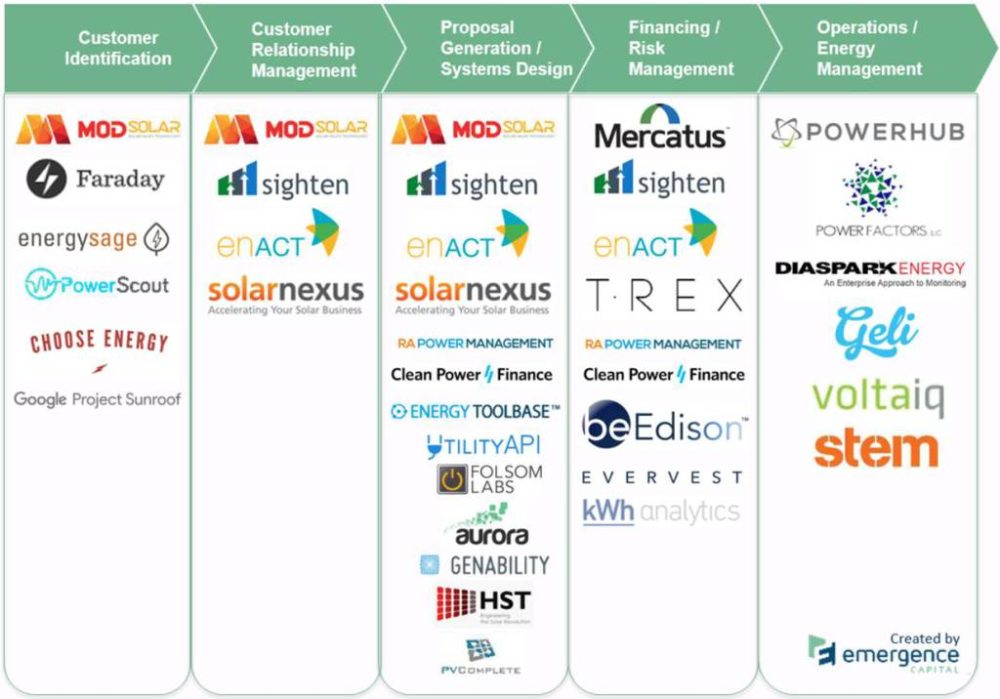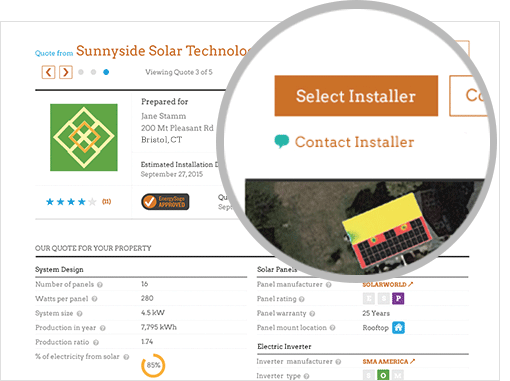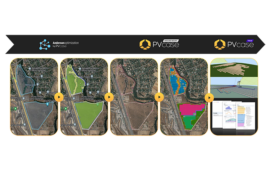As the solar industry matures, it finds better ways to do things. Many solar-specific software options are coming to the market with the promise of reducing costs, improving accuracy and allowing the industry to scale.
Here are some types of solar software, according to a vendor chart produced by emergence Capital a few years ago. This is by no means a be all, end all list (as some of these companies have merged, changed names or left the market), and new software options are constantly coming to the market.
Customer identification software
Customer acquisition can be a time-consuming and costly task for solar contractors. Many installers resort to door-to-door sales and keep information on a variety of platforms, such as SalesForce and Excel. But customer identification software can help lead customers to installers and simplify sales.
For example, EnergySage serves as a simple, online marketplace to match installers and homeowners. It’s backed by organizations such as the U.S. Department of Energy and Connecticut Green Bank. The site connects with Google so consumers can enter their address and pull up a photo of their roof. Installers can then offer quotes and financing options.
Other examples of customer identification software include MODSolar, Faraday, PowerScout, Choose Energy and Google Project Sunroof.
Customer relationship management software
After identifying customers, tracking progress from proposals to project completion requires a lot of work and organization. Customer relationship management (CRM) software makes this easier for installers.
One solution, Sighten, not only provides residential and commercial customer management functions, but encompasses features of other types of software, supporting the whole solar lifecycle including system design and asset management.
Other examples of CRM software include MODsolar, ESolar CRM, enACT and solarnexus.
Proposal generation/system design software
Providing a customer with the most accurate proposal possible is important to earning their business. Solar design software is making it easier than ever to automate system design so that sales people can quickly give an accurate system estimate to customers.
An example of software with proposal generation/system design features is HelioScope from Folsom Labs. HelioScope is a PV system design tool that integrates system layout and performance modeling to simplify engineering and selling. It integrates programs like Sketchup, PVsyst and AutoCAD so that engineers can work faster to deploy more projects at a lower cost.

Another software from Aurora Solar includes options for submodule simulation and global maximum power point tracking. The software also has features for pre-qualification, sales, permitting and financial analysis.
Other examples of proposal/design software include MODsolar, Sighten, enACT, solarnexus, Ra Power Management, solarnexus, Clean Power Finance, Energy Toolbase, UtilityAPI, Genability, HST Solar and PVComplete.
Financial risk management software
While more residential customers are choosing to pay cash for their systems, many want to see their financing options, from leases to PPAs and more. Software can access the latest data to factor in electric rate schedules, tariffs, rebates and other incentives from specific states or towns, so customers will understand how a solar array will affect their electric bill.
enACT, for example, lets developers and installers compare financing options and apply directly with lenders. The platform also helps make sales and operations more efficient by acting as a CRM, proposal and design tool as well.
Other examples of financing software includes Mercatus, Sighten, T-REX, Ra Power Management, beEdison, Evervest and kWh Analytics.
Operations/energy management software
Operations/energy management/asset management software can help developers and other system owners monitor and manage solar sites. Some software can help reduce demand charges for systems with storage. Others can help improve efficiency and accuracy of asset management by automating data.
For example, Geli and stem help developers automate and analyze sites with energy storage. These platforms can track changing utility rates and shift energy use away from the most expensive times of the day, reducing demand charges and increasing project economics.
Other software like BPS Asset Management and Arbox can help reduce soft costs by making it more efficient to manage multiple sites with various hardware. Tasks like reporting contract compliance and tracking project performance, which traditionally used Microsoft Excel, Outlook, emails and phone calls, can be done more quickly and accurately.
Other examples of operations/energy management software include PowerHub, Power Factors, Diaspark Energy, and Voltaiq.











One aspect missing from this list of software options is the analysis and consulting aspect where the energy consultant reviews energy usage to determine current and future energy needs, takes into account current and potential future rates and the impact of EV sharging etc.
In between CRM and proposal generation there should be an analysis step.
The tou.solutions tool is one example of a tool which helps energy consultant and customer visualize their current and future cost of energy and leads to better proposal generation.
I would also include AppSheet as a data to mobile app platform which helps companies create their own systems (CRM’s, installation tracking, etc.) Here’s a customer story from Nigeria: https://blog.appsheet.com/sales-apps-how-appsheet-has-made-life-easier-at-pegafrica
-Eddie
Next time you update your article please consider including http://www.sunbasedata.com it is a full business life cycle product for solar companies including CRM, Sales, Panel Layout, Training, Financing, Marketing. We also include solar calculators that can be added to a company website or run as a Facebook ad for customer identification.
Thank you.
Jared Dubin